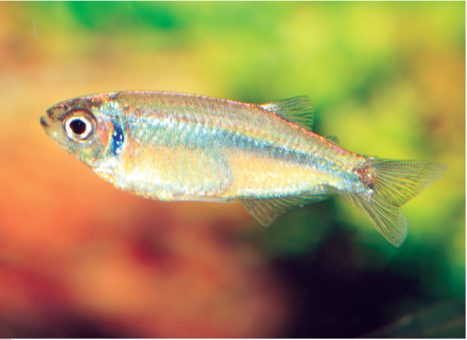
In 1949 W. LADIGES introduced a new dwarf characin in the hobby magazine Wochenschrift für Aquarien- und Terrarienkunde under the heading “Drei unbestimmte Neuheiten” (Three unidentified new species). A year later he formally scientifically described the species as Microbrycon cochui.
Unusual discovery
The specimens on which the description was based were found in a consignment of ornamental fishes at the then world-famous import business Aquarium Hamburg, where Ladiges, who later worked as an ichthyologist at the Hamburg Zoological Museum,was working at the time. That is nothing particularly unusual in itself. Lots of small fishes from the tropics have the ornamental fish trade to thank for their discovery. But in this case matters were somewhat different, as Aquarium Hamburg was actually importing South American Leaf-fishes (Monocirrhus polyacanthus) from Peru. Because in those days ornamental fishes were still imported via steam ship, they had been in transit for several weeks. So that the delicate predators wouldn’t come to grief during transportation, the exporter had packed small food fishes with them in the cans.And those were the new dwarf characins! It would appear that the leaf-fishes were a bit sea-sick and didn’t have much of an appetite; otherwise who knows when Tyttocharax cochui would have been discovered! On investigation it was found that the few specimens imported originated from the vicinity of Ramon Castilla (Loreto Province, 4°14’S, 69° 58’ W). Ladiges initially handed them over to the well-known expert E.Roloff to try and breed;he was promptly successful, as he reported in the December 1949 issue of the same magazine as first announced theimportation.
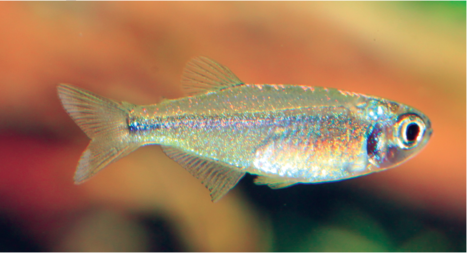
Caudal-fin glands
Nowadays it is easy to underestimate how many fish species were already being maintained and bred in the aquarium in Europe prior to the Second World War. The same applied back then as today: practically everything that humanity knew about the biology of small fishes was derived from the observations of aquarists.Naturally the onset of war placed massive limitations on the aquarium hobby just as it did on all other human cultural activities,but people did the best they could. A number of species of tetras are known from southern South America that exhibit quite atypical,aberrant reproductive biology in the aquarium.These fishes have modified scales at the base of the caudal fin that perform the function of glands; in other words, they are able to release substances. The precise biological significance remains unknown to the present day,but it is known that the substances released play some role or other in breeding, as only the males possess these caudal glands.
We know a certain amount more: these tetras practice internal fertilization. The females are able to lay fertilized eggs even in the absence of a male. And that is precisely what Roloff observed: the females of the then still nameless dwarf characin, which grows to only around 2 cm long, laid their eggs on the undersides of leaves, something with which he was already familiar from the subfamily Glandulocaudinae,as this group of tetras were all classified in Roloff’s and Ladiges’ day; nowadays two subfamilies are recognized, the Glandulocaudinae and the Stevardiinae. Both belong to the family Characidae.
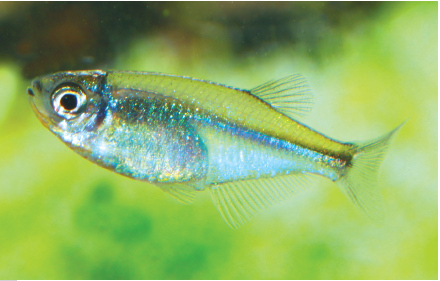
Tyttocharax
The genus Microbrycon, to which Ladiges originally assigned the new dwarf tetra, is now regarded as a synonym of Pterobrycon, another genus of tetras with tail glands, in which males have two enlarged, spoon-like body scales with which they maneuver their sperm into the female via an acrobatic performance. The genus Tyttocharax was erected in 1913 by Fowler for his new species T. madeirae. In 1958 Boehlke described two further species in the genus,T.atopodus and T.rhinodus,both from Peru, which are today assigned to the genus Scopaeocharax. And finally,Weitzman & Ortega described what is currently the last Tyttocharax species, Tyttocharax tambopatensis, in 1995. The three currently still valid species remaining in Tyttocharax can be distinguished relatively easily using the following key:
1a.Adipose fin present…2
1b.Adipose fin absent.…..T.tambopatensis
2a.Unpaired fins transparent or with a white edge…… T. cochui
2b. Unpaired fins with dark markings.….. T. madeira
All three species are imported occasionally, and those pictured here were all imported to Germany by Aquarium Glaser in 2011. Because they look rather similar – they are, after all, tiny and constantly moving around, so that you need either a very well lit aquarium or a photo in order to be able to see the differences – they are sometimes imported mixed together,at least in the case of T. cochui and T. tambopatensis, although the species don’t occur together in the wild. The mixing takes place at the exporter’s. It is a real chore for the importer to sort the two species out again.
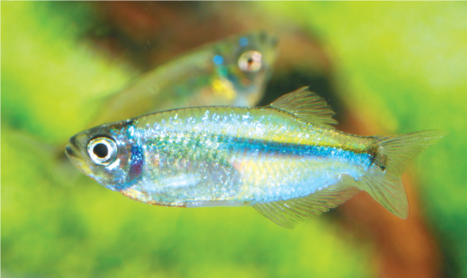
Tyttocharax in the aquarium
Despite their small size – as already mentioned several times, they grow to only 2-3 cm long – all Tyttocharax species are easy to maintain in the aquarium.They are robust little fishes that can generally also be maintained in the company of other peaceful species. If you decide to keep them in a species aquarium, then it shouldn’t be too small, as these tetras are extremely lively fishes that require space in order to display their natural behavior. Tyttocharax are very peaceful and leave aquatic vegetation completely alone. These fishes will accept all the usual fish foods of suitable size,generally including dried foods as well. The water in the natural habitat is soft and slightly acid, while in the aquarium Tyttocharax have proved undemanding in this respect,as long as the water parameters avoid extremes.Water with a hardness of 5- 20 °dGH and a pH of 6.5 – 7.5 is very suitable, although neither hardness nor pH should fluctuate on a regular basis.These tetras are shoaling fishes or – more accurately – social fishes.They are only rarely seen swimming in regular shoals. But there is always something going on in an aquarium with Tyttocharax, as these little fishes chase one another and display constantly. If you decide to keep Tyttocharax then you should obtain no fewer than 10, better 20 individuals. These tetras are uninteresting if kept singly or in too small a group.
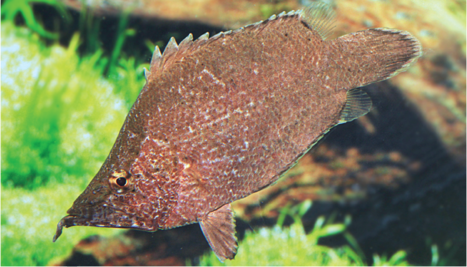
Breeding
As already mentioned,Roloff spawned the first Tyttocharax cochui imported.However detailed breeding reports are lacking to the present day. These little fishes practice internal fertilization, but the details of how they go about it is something only the aquarists of the world can find out. When attempting to breed them it is important that plants are available, so that the females can lay their eggs on the undersides of the leaves. Ludwigia and similar plants that grow up to the water’s surface are particularly suitable for the purpose, as Tyttocharax are reluctant to leave the upper third of the water column.It is also wise to use soft water with a pH of around 6 for breeding.
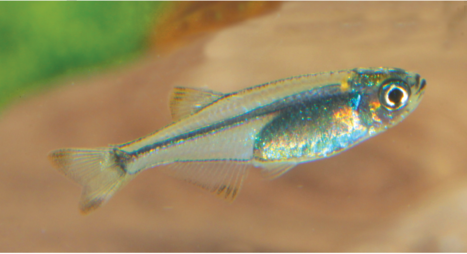
Anzeige






